Don’t be put off by its weird name! “Ants climbing a tree” is a super tasty Sichuan dish containing vermicelli noodles, minced meat and various pungent seasonings.
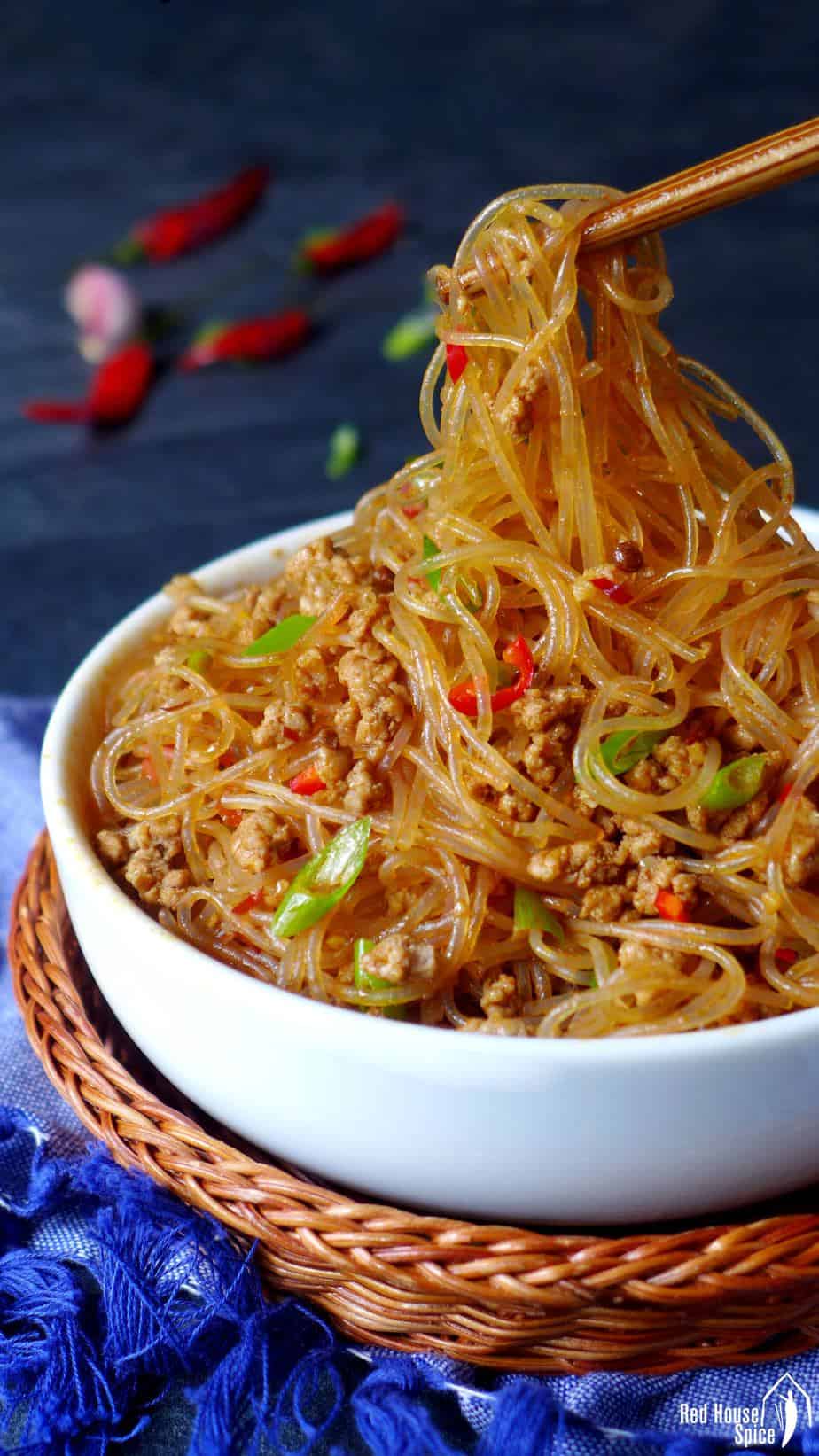
Sometimes it’s not easy to understand the menu of a foreign cuisine when the name of a dish says something extremely strange. Take “Ants climbing a tree (蚂蚁上树)” for example. If you’ve never heard of this classic Chinese dish, I guess you are put off by its confusing, uninviting name. Hold on a minute! Let me introduce this super tasty dish and show you how to make it in your own kitchen.
A delicious dish with a strange name
Whoever came up with the name “Ants climbing a tree” has a pretty unusual imagination. In fact, what you get on the plate is mung bean vermicelli noodles (tree branches) stir fried with minced meat (ants) and sprinkled with scallions (tree leaves). Salty, spicy and aromatic, it’s one of the signature dishes of the famous Sichuan cuisine.
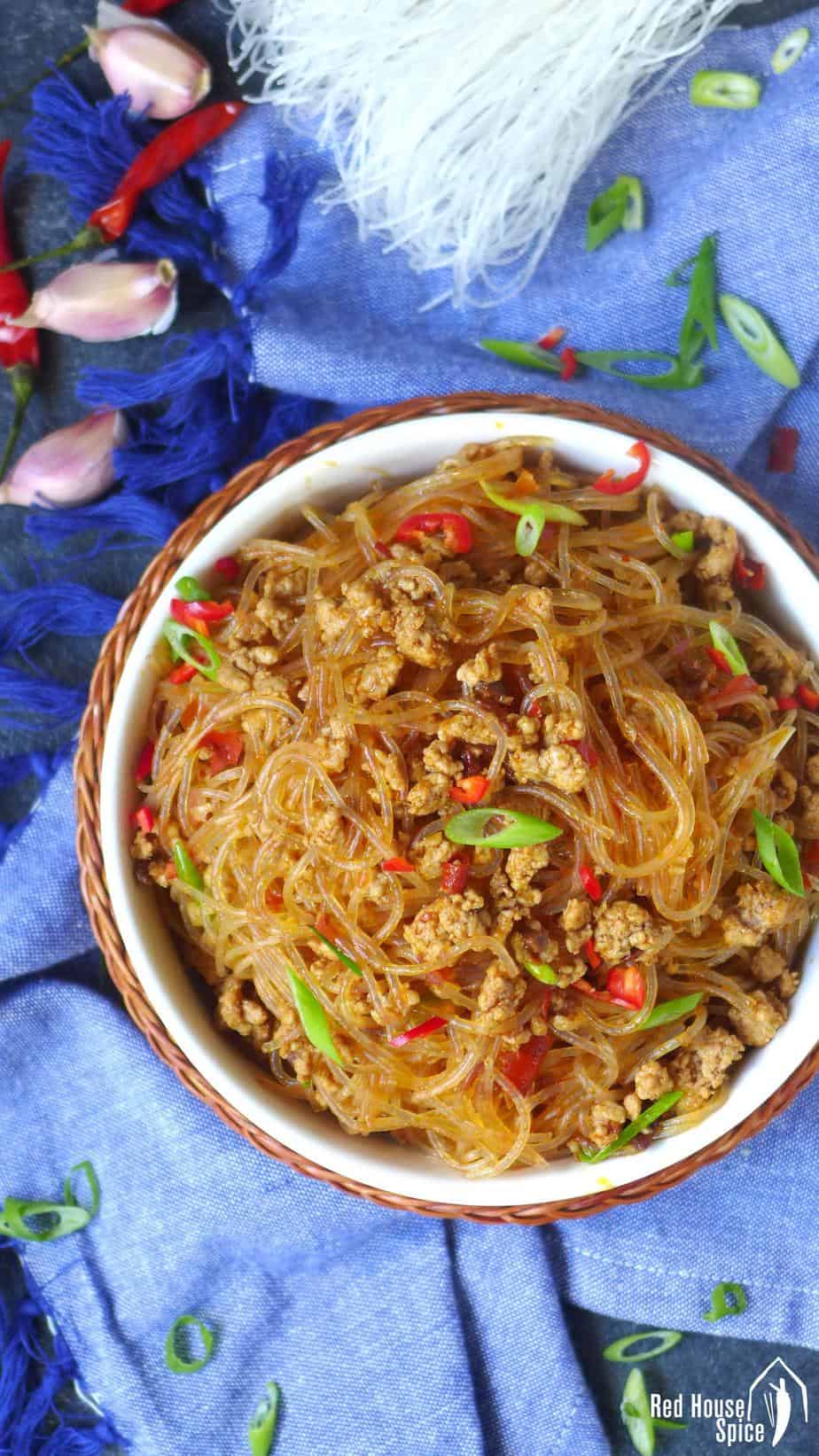
What are vermicelli noodles
Mung bean vermicelli noodles, known as Fen Si/粉丝 in Chinese, are round, very thin noodles made of the starch of mung beans. They are widely used in Chinese cuisine. You can find them in stir-fried dishes like today’s recipe, in steamed dishes like Garlic Shrimp with Vermicelli, in soups, in salads like Glass Noodle Salad or in dumpling fillings (e.g. Chive chive pockets).
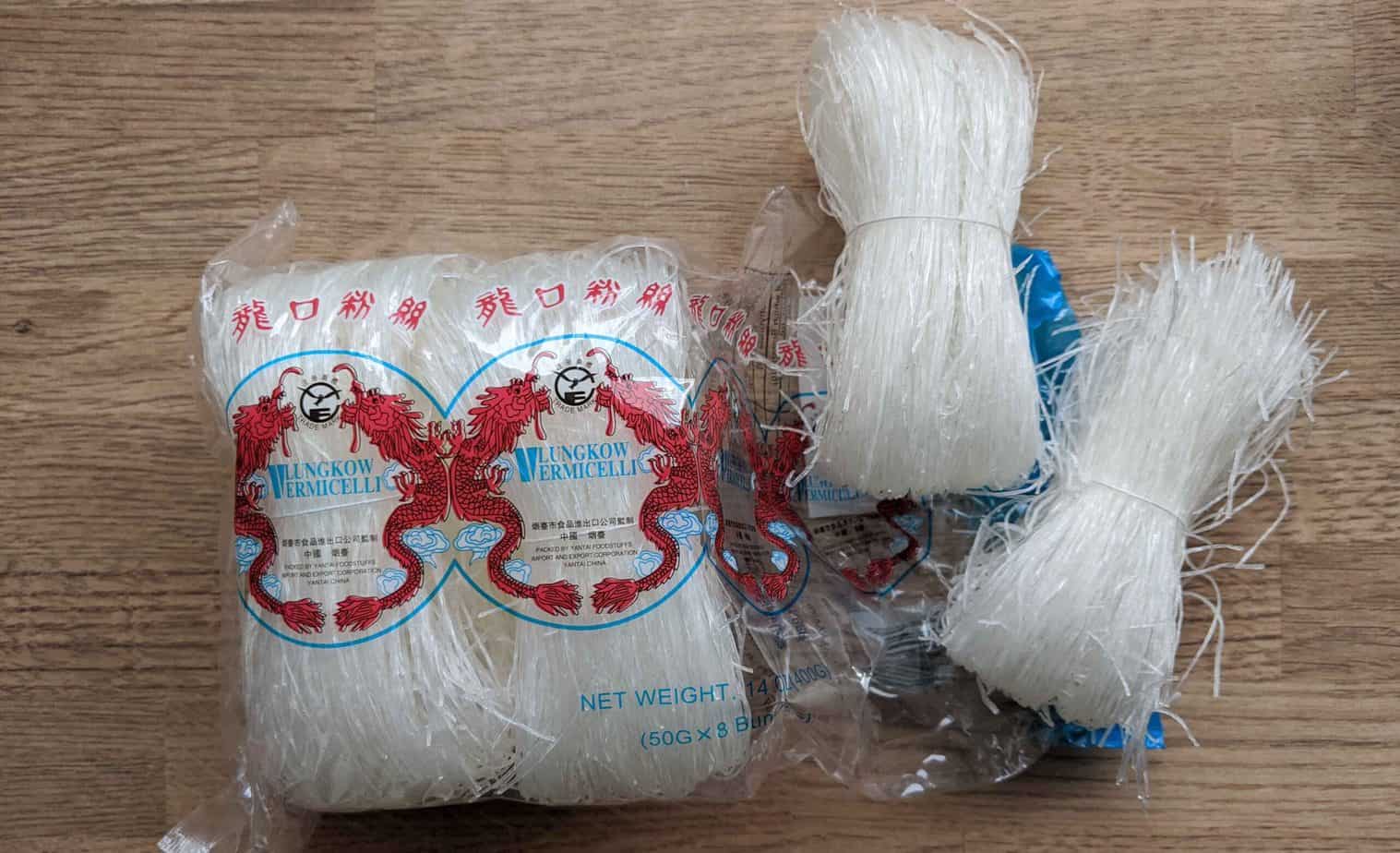
They come in dried form and are commonly available in Chinese stores. Before using, you need to soak them in water. 10 mins would be enough for them to become soft and pliable. They taste quite plain on their own but are brilliant at soaking up flavours from the seasonings and sauces. Also, I love their semi-transparent look and springy, slippery texture.
What make this dish delicious
Over the years I’ve tasted “Ants climbing a tree” many times in restaurants. I enjoyed some of them but not others. To me, a great plate of “Ants climbing a tree” should have:
- Balanced flavour: it’s not overly salty but highly fragrant. It’s spicy with a hint of sweetness.
- Perfect texture: the vermicelli is soft to chew but not mushy.
- Right amount of sauce: most of the liquid should be absorbed by the noodles. Yet it still tastes very moist.
- An extra zing: add garlic and spring onion at the very end to retain their fresh flavour.
The cooking procedure

Through experimenting in my kitchen, I’ve come up with a simple, straightforward recipe that produces a very satisfying dish of “Ants climbing a tree”. It’s quite addictive! Here is a summary of the cooking steps:
- Soak vermicelli noodles until soft and pliable. Rinse under cold water and drain.
- Fry Sichuan chilli bean paste (aka spicy Doubanjiang) and chilli powder in oil, then stir in minced pork, ginger, rice wine and soy sauce.
- Pour in hot water. Add sugar, white pepper and the noodles. When most of the water is absorbed by the noodles, add scallions, garlic and fresh chilli to finish.
How to serve this dish
On a Chinese dining table, this dish is usually served with steamed rice along with other savoury dishes.
Sometimes, I enjoy having it as a quick lunch on its own. If you wish to do so, remember to slightly reduce the usage of Sichuan chilli bean paste. Otherwise you might find it a bit too salty to enjoy on its own.
Other Sichuan dishes on the blog
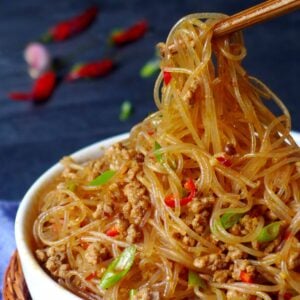
Ants climbing a tree: spicy vermicelli stir-fry (蚂蚁上树)
Ingredients
- 100 g dry mung bean vermicelli noodles - 3.5oz
- 1 ½ tablespoon cooking oil
- 1 tablespoon Sichuan chilli bean paste - see note 1
- ½ teaspoon chilli powder
- 150 g minced pork/beef - 5.3oz
- 1 teaspoon minced ginger
- 1 teaspoon Shaoxing rice wine
- ½ teaspoon light soy sauce
- 250 ml hot water
- 1 teaspoon sugar
- ¼ teaspoon white pepper
- 1 stalk scallions, finely chopped
- 2 cloves garlic, minced
- fresh chilli, finely chopped - optional
Instructions
- Soak noodles in warm water for 5 minutes (or in cold water for 10 minutes) until they are soft and pliable. Rinse under cold water and drain. Set aside.
- Heat up oil in a wok over a medium-high heat. Briefly fry chilli bean paste and chilli powder, then stir in minced pork, ginger, rice wine and soy sauce. Fry until well combined.
- Pour in hot water. Then add sugar, white pepper and the noodles.
- When most of the water is absorbed by the noodles, add scallions, garlic and fresh chilli (if using). Mix and cook for 30 seconds then serve immdiately.
NOTES
NUTRITION
NUTRITION DISCLOSURE: Nutritional information on this website is provided as a courtesy to readers. It should be considered estimates. Please use your own brand nutritional values or your preferred nutrition calculator to double check against our estimates.


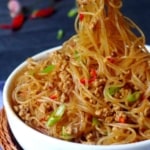
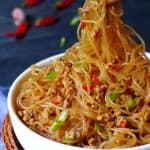
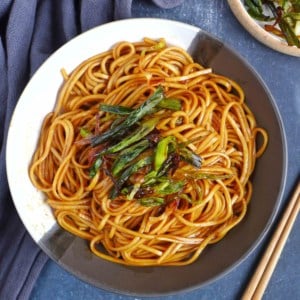


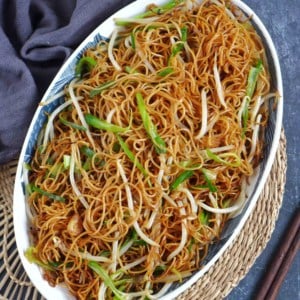
Can this dish be made with regular Italian vermicelli noodles?
And as for the pancake with green onions go… can the dough be made with rice flour in order to make it gluten free?? Both of these two dishes look just too good !!!
Italian vermicelli noodles have a very different texture and taste. You could use them but the finished dish wouldn’t be the same.
Unfortunately, gluten-free flour wouldn’t work for scallion pancakes.